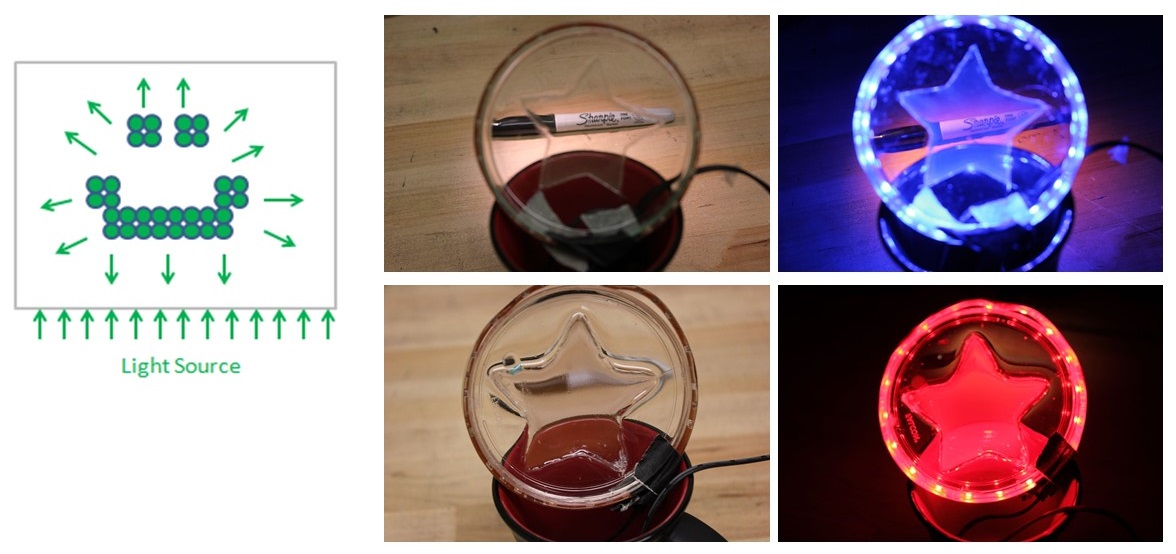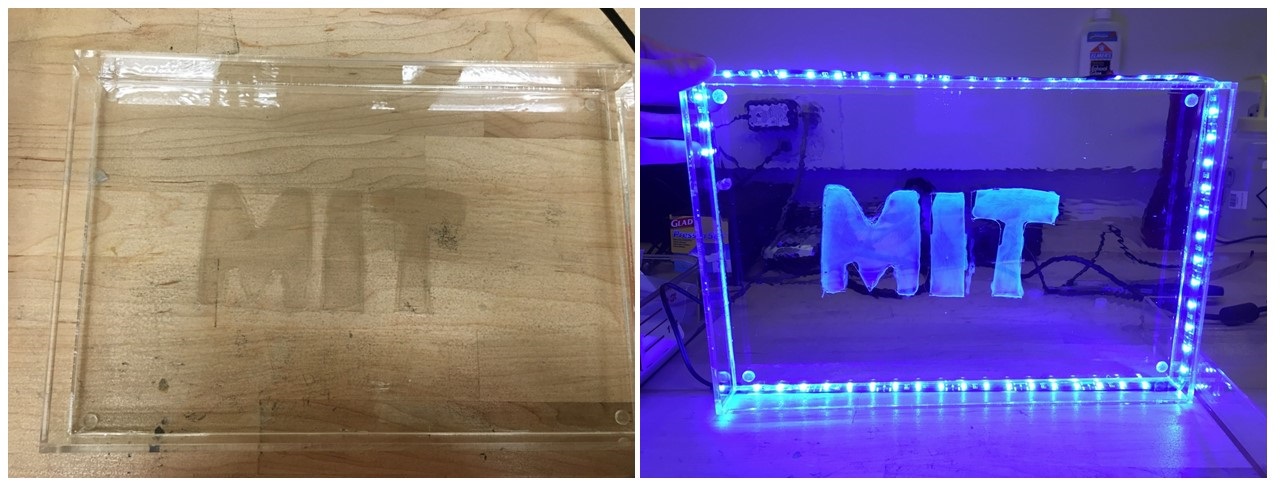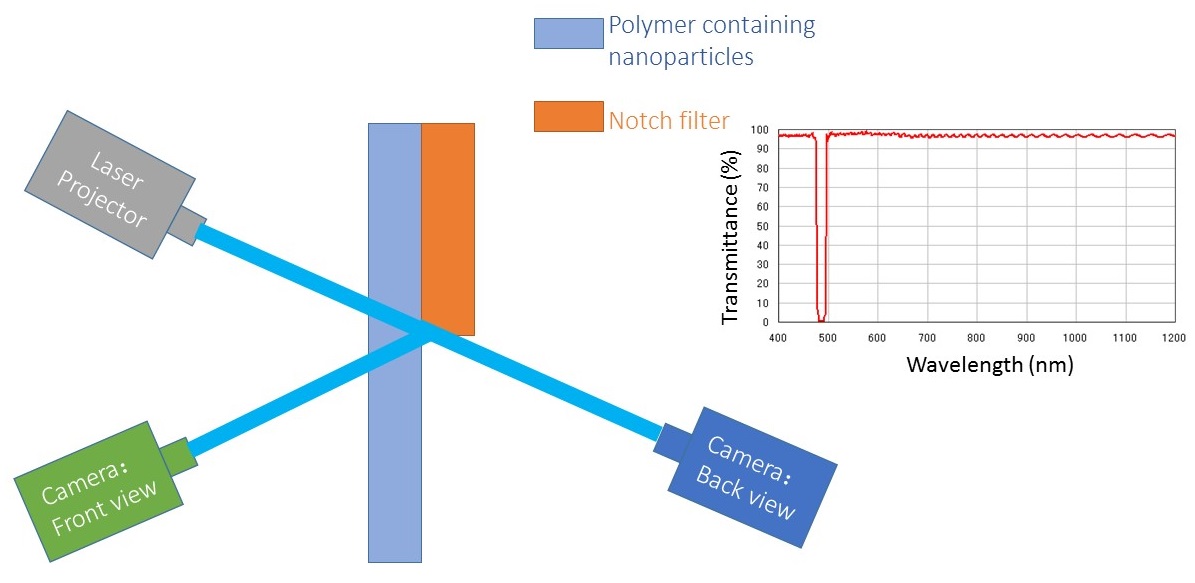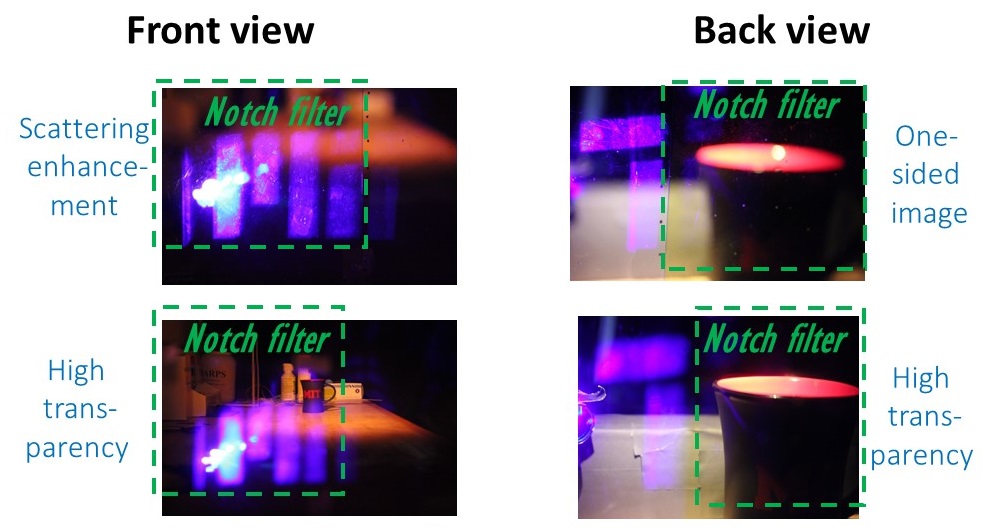|
| ||
| Transparent displays have a variety of
potential applications: one may use a storefront glass or a subway window
as a projection screen, or display navigation and dashboard information
while looking through the windshield of a car or plane. A number of
technologies have been developed for such displays, but each has certain
limitations. We came up with a new kind of transparent display using the resonant scattering of nanoparticles. The screen consists of a transparent polymer embedded with designed nanoparticles. The nanoparticles selectively scatter the targeted wavelength of light that we project (therefore acting as a screen) but let other wavelengths of light pass through (therefore appearing transparent). Such screens are merely doped plastic foils. They are simple to manufacture, of low cost, scalable to large sizes, and have wide viewing angles, making them attractive for certain applications. Our paper from 2014 describes the concept and a single-color demonstration: "Transparent displays enabled by resonant nanoparticle scattering," Chia Wei Hsu, Bo Zhen, Wenjun Qiu, Ofer Shapira, Brendan G. DeLacy, John D. Joannopoulos, and Marin Soljacic, Nature Communications 5, 3152 (2014); doi:10.1038/ncomms4152. The company Lux Labs started commercializing this technology in 2019. 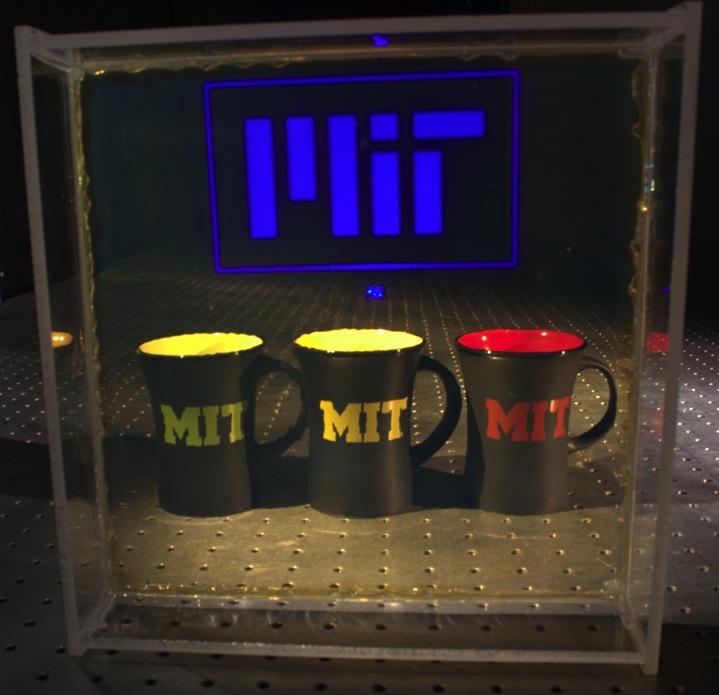
[A blue MIT logo is projected onto the transparent screen. Three cups are placed behind the screen to show its transparency.] Demonstration videos of the screen are available: video1, video2. These two excellent news articles explain the concept in simple terms:
It is also mentioned by BBC News, ABC News, Popular Mechanics, CNET, Engadget, The Huffington Post UK, Daily Mail, Boston Magazine, Business Insider, GigaOM, Science/AAAS, MRS Materials360, ScienceDaily, Phys.org, Science World Report, Photonics.com, NovusLight, Nanotechnology Now, Radiology Daily, Gizmag, Nanowerk, International Business Times, Business Standard, The Engineer, Daily Tech, Tech Times, Science Newsline, Ubergizmo, Technology.org, Computerworld, Examiner, OFweek, Science Codex, Slashdot, Brazilian Mail (Portuguese), Scinexx (German), Digital Signage (German), SINC (Spanish), sophimania.pe (Spanish), notizie.tiscali.it (Italian), QQ.com (Chinese), EEPW.com.cn (Chinese), cnBeta.com (Chinese), opticsky.cn (Chinese), twwtn.com (Chinese). | ||
|
All the material above relates to our work published in January 2014. In what follows below, we describe some of our work since then. 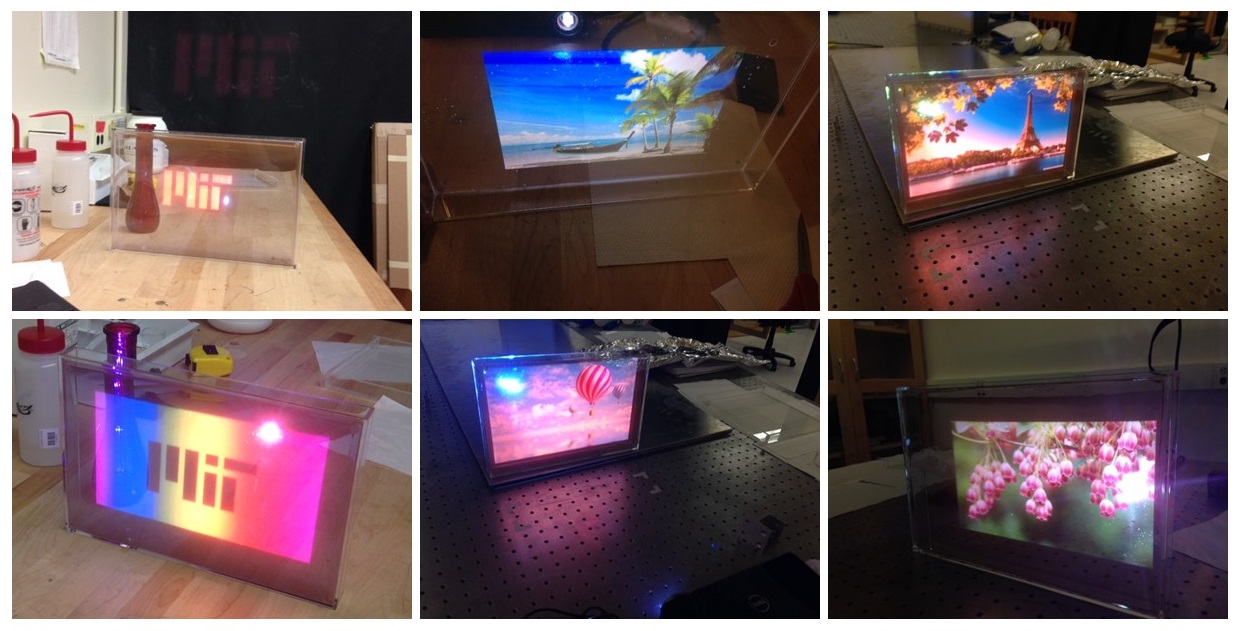
Figure above: While silver nano-particles can be designed to scatter
(mostly) in blue, gold nano-particles can be designed to scatter
(mostly) in red, as we have done in the top-left panel. Top-center,
and top-right panels show that a display designed for blue works
quite well for green also, because green is not far from blue
in wavelength, and because the silver particles used for that
display do not have a very narrow response. In contrast, red
color appears faint, but still somewhat visible (bottom-center
and bottom-right). Left panels show a screen optimized for red,
whose surface is also substantially more smooth than the previous
screen, due to a different polymer fabrication process; it is a
high-concentration ethanol colloid of Silica-coated gold
nanoparticles dispersed in methylmethacrylate resin which is
chemically polymerized to polymethylmethacrylate under a Mylar
screen to make it optically smooth; the optical smoothness
implies that this screen has much less apparent "waviness",
compared to the original screen.
Figure above: By embedding nanoparticles into a polymer, and
passing light through the material of the frequency that matches the resonance
of the nanoparticle frequency, we can implement static
illuminated transparent displays, scattering the resonant
light only and exactly where the nanoparticles are deposited.
Left: sketch of how the principle works. Center: unilluminated
samples (with further work, the faintly visible star-shapes
could be made nearly invisible). Right: samples illuminated
with blue light (top), or red light (bottom); only the part
of the sample where the particles are scatters the light, and
hence the star-shapes are now clearly visible.
Figure above: Same principle as the previous figure, but now
implemented with letters "MIT".
Figure above: Imagine a transparent display which when
observed from the "front" shows an image, or a movie, but
when observed from the back appears like a completely
clear piece of glass; imagine a window of a restaurant, or
a shop on which the passersby can be shown images of
interest, but the people inside see only a perfectly clear
window. A display of this type might also serve as a privacy
screen. To enable such a display, we combined the display
discussed at the top of this web page with a notch filter.
An optical notch filter is a band-stop filter or band-rejection
filter that transmits most wavelengths unaltered, but
reflects those in a specific range. In the inset on the
right, we show transmittance of a notch filter that
reflects blue color, and allows all other light to pass
through). The figure presents the principle of the
operation of such a transparent display, enabled by
nanoparticles deposited onto a notch filter. Light is
incident onto the nanoparticle. Assume that the nanoparticle
has a localized surface plasmon resonance at wavelength
lambda (blue) which is exactly the center wavelength of
the reflection window of the notch filter. Light from
the far field incident onto the nanoparticle gets scattered
for the first time, gets reflected, and gets scattered by
the nanoparticles for a second time. Therefore, the
scattering cross-section of the nanoparticle will be doubled,
resulting in two times brighter screen than usual, when
observed from the front (i.e. when observed from the
projector's side), but when observed from the back, image
is not visible at all: only a clear screen appears. Demo
of such a system is shown in the figure below.
Figure above: Demo of a one-sided display described
in the previous figure. Top panels: camera is zoomed
onto the screen. Bottom panels: camera is zoomed onto
the objects behind the screen. Panels on the left: seen
from the front of the notch filter: the letters “MIT”
are clearly visible, and in fact (as expected) enhanced
at the position where the filter is. Panels on the
right: seen from the back of the notch filter: “MIT”
letters are invisible as seen from the back of the
filter, but the screen is still transparent. |
